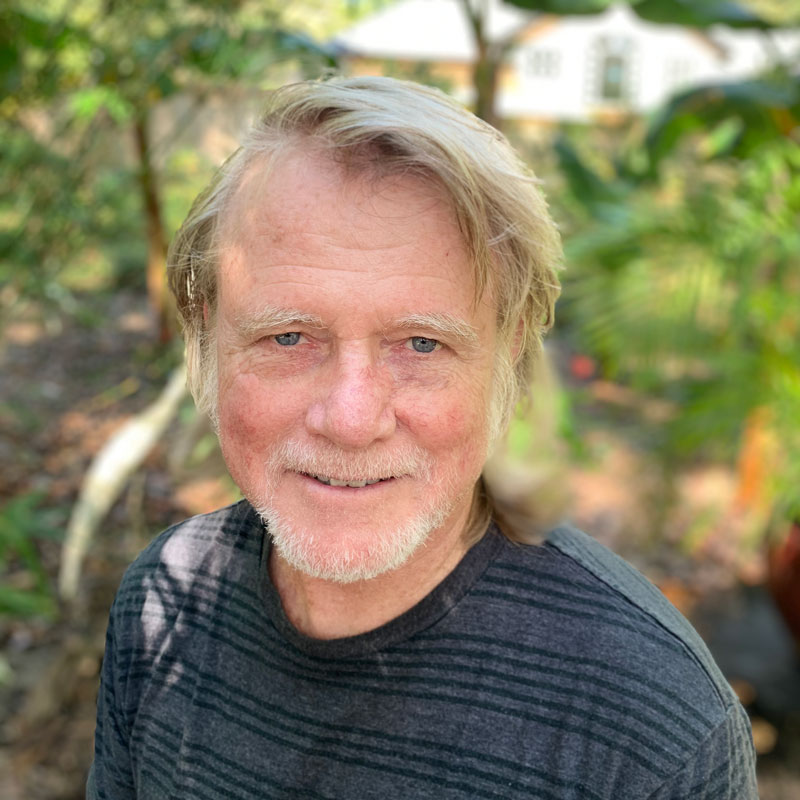 UF Center for Latin American Studies
UF Center for Latin American Studies
GeoSpatial Analysis & Techniques; Global Environmental and Social Change
Brazil, Mexico, Ecuador
During summers in high school, I worked as a mate on a fishing boat in the Gulf of Mexico, and it was here that I first looked south, wondering about distant places, about parts of the world different than mine. This led me to an early career as a backpacker, and a semi-professional ocean racer, seeking out new places, mostly south and east of the continental US. One trip took me to the island of Barbados, where I attempted to start a commune of revolutionary surfers, but was told by immigration authorities I would not be welcome. This failure in my small effort to create a world of earthly delight made me realize an education might help me continue this quest, certainly with respect to providing funds for surf adventures. Once in school, I discovered that a life of the mind was of greater excitement than one of discovery, lived fitfully in a world that was mostly mapped and known. Thus, for better or worse, I began my walk down the academic pathway.
I am now a Human Geographer, with a PhD in Regional Science from the University of Pennsylvania, which places me on the quantitative side of Geography. While at Penn, it was my good fortune to work with Masahisa Fujita, who collaborated with Paul Krugman in laying foundations for the so-called, New Economic Geography. I also took three graduate level courses with James Pickands III, a well-known mathematical statistician in The Department of Statistics and Data Science in the Wharton School. Key to my background is that my training crosses disciplinary boundaries to an extreme. Specifically, I completed an MS at the University of Florida in Environmental Engineering and was involved with the Systems Ecology group led by Howard Odum. It is this blended training in the social and physical sciences that explains my research program, which for the past thirty hears has focused on land cover change processes in development frontiers, primarily in Brazil but also in Mexico and Ecuador.
My most characteristic work to date integrates data from multiple sources with the remote sensing of land cover in studies of tropical deforestation. Since the early 1990s, I have led a number of field activities in the Brazilian States of Pará, Amazonas, and Rondônia studying household land use, the spatial-processes of road building, and the impacts of land reform on tropical forests. More recently, I have studied the impact of NAFTA on Mexico’s agricultural sector, and the long-run sustainability of Indigenous resource management in Ecuador. I have made seminal contributions to forest transition and household life cycle theory. Further, I helped pioneer the integration of classified satellite imagery with household surveys to develop ground level explanations of resource use and degradation.
In addition to my empirical work, I maintain a strong interest in classical land use theory and have used the framework of location rent to provide a full explication of indirect land use change and land sparing. Most recently, my Amazonian research has spilled over into studies of regional climate change, and I am the first person to publish an article that provides a date for the demise of the Amazonian Forest due to a tipping point transgression.
I have always resisted intellectual categorization, which explains in part why I have felt so at home in the field of Geography. It is also one of the reasons I have embraced the “creative-turn” in the field and pursued alternative modes of academic expression with publications that broach the humanities. In 2021, I published the first piece of creative non-fiction that has ever appeared in the Annals of the American Association of Geographers, “NAFTA’s Cartel Economy.” In 2022, I brought out an article in GeoHumanities, “Tapajós,” which describes in full measure how an Amazonian Tipping Point is likely to occur, and what it is likely to look like. I believe such writing is more effective at waking the public to the global environmental crisis we presently face, and I will continue to pursue it vigorously.
I have not returned to Barbados since my early sojourn there, but by way of preparation I have sailed the Society Islands (Raiatea, Taha‘a, Bora Bora, Huahine) and the Kingdom of Tonga. I am on my way, Barbados!
Contact
